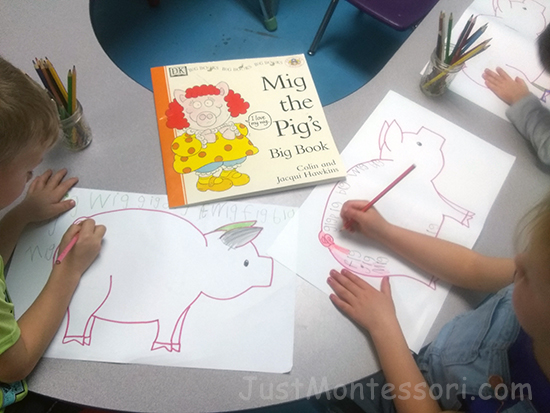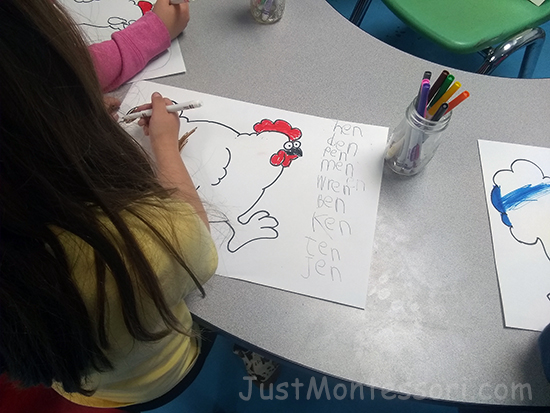After the child has worked with blending letter sounds together, they can begin working with the reading boxes. Boxes are organized into three categories: three-letter, four-letter, and multiple phonogram words. The boxes begin with objects and then move onto picture cards just as at the Sound Table. For each group of boxes a card is provided and kept at school to keep track of progress.


Pre-selected boxes e, i, o, and u would follow. Depending on the child, a box may need to be repeated. I will start to encourage children to write the words with pre-selected boxes. Writing the words in little booklets continues with all remaining boxes in program.


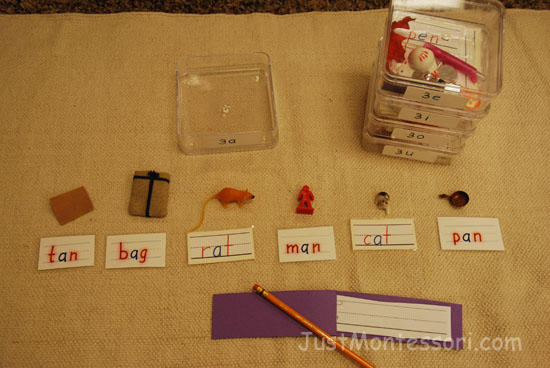



A child chooses one book and as they read the word on the pages, they highlight it.

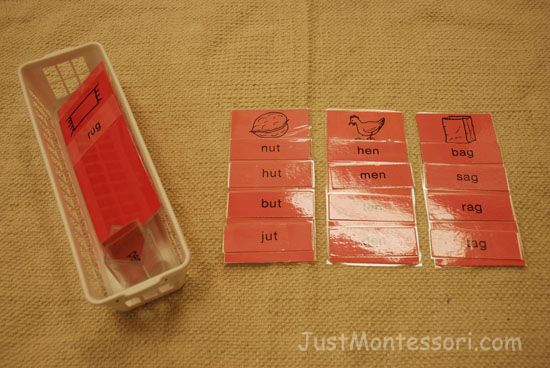
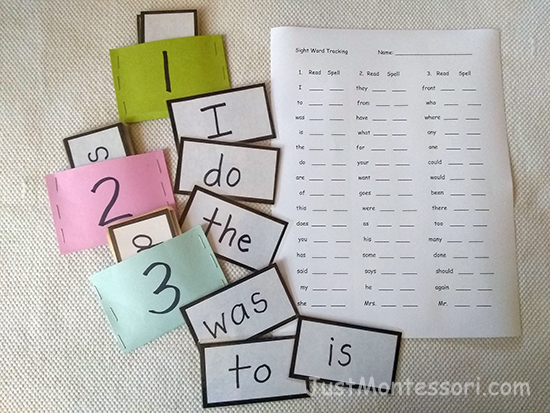
I decided to break up sight words into three sets. They are all placed in one basket but learned at different times throughout the reading program. Here is where we begin to introduce sight words folder 1. Keeping track of the words a child can read and spell are important. You can make check marks or however it is you like to keep a record of the child’s progress. I made a list of each sight word in the folders 1-3.
It is about this time that Capital Letters are worked with. I usually have them match upper to lower case letters with a worksheet type of lesson. Most children are familiar with this, but it is important to have them work with some type of material with upper- and lower-case letters.
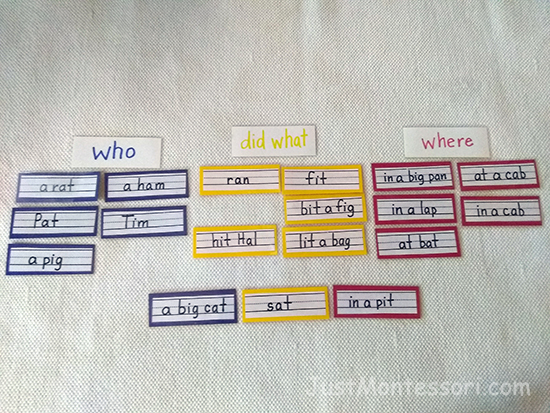
As you work with children and as they progress toward reading and writing sentences, beginning with phrases is a nice steppingstone for that. Tell the child that they can read enough words now, to read phrases. Phrases are one or more words that tell who, did what, and where. Explain that a phrase is not a complete sentence, as a sentence must have a who and did what phrase but can also have a where phrase. Ask the child to choose a who, did what, and where phrase to put together. They can be silly at times, which is fun. This work is helping a child to get a sense of how a sentence begins to flow and some of its parts come together.
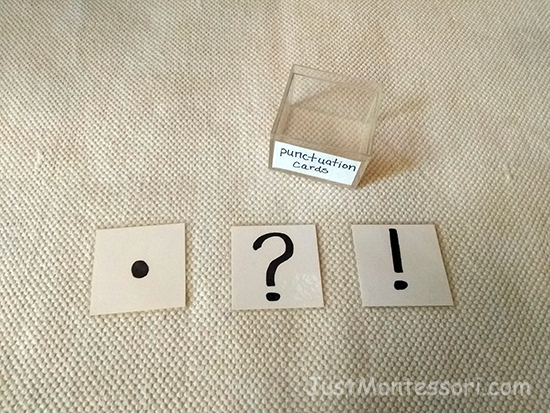

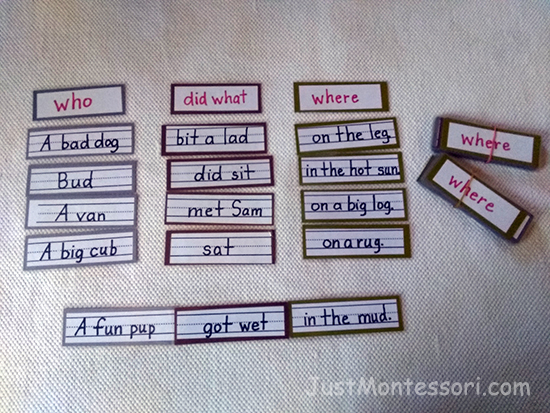
This work now involves a complete sentence with punctuation and phrasing.

I have three different sets of these. This is set 1 and then 2 and 3 are below. I always have the children write the sentences.

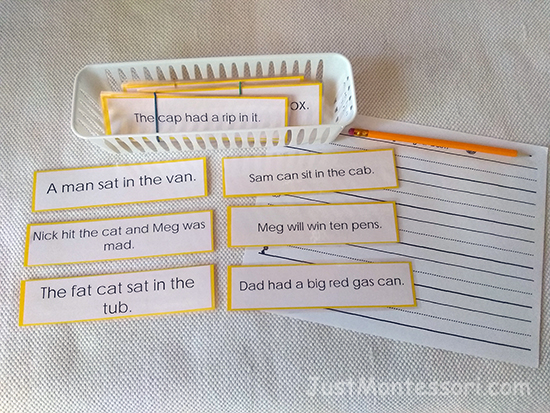


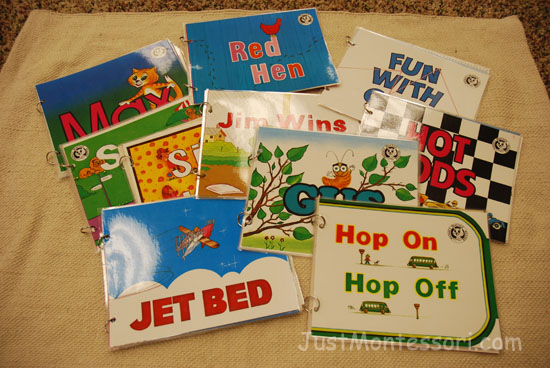

Additional Ideas:
Another idea for some children that may need or enjoy extra word blending can be to use Big Books. Theses are fun rhyming stories. As we read the book, children write down the rhyming words and then can color the picture.
